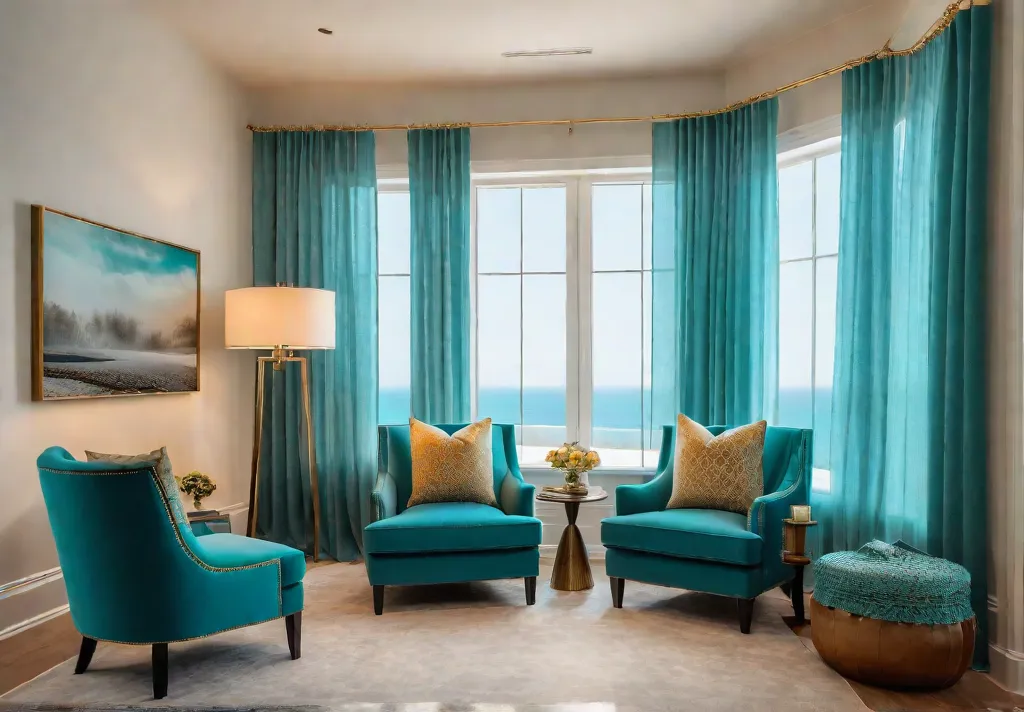Have you ever stepped into a room and felt an inexplicable sense of warmth and comfort envelop you? That’s the power of color psychology at work, subtly shaping our emotions and perceptions. In interior design, harnessing this power is especially crucial when crafting cozy sanctuaries within compact living spaces. Understanding the emotional and psychological effects of different hues allows you to transform even the smallest living rooms into an inviting oasis that reflects your personality and nurtures your well-being.
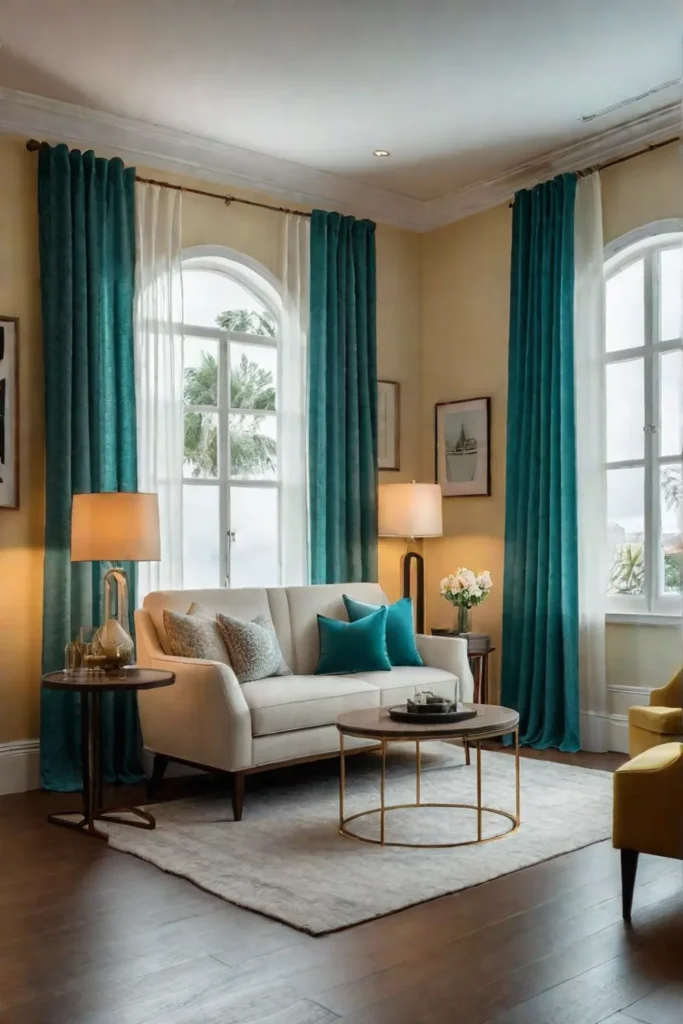
Unlocking the Secrets of Color Theory
Color theory is the foundation upon which we build our understanding of how colors interact and influence our emotions. In small living rooms, this knowledge becomes invaluable as it guides us in selecting hues that can visually expand or cozy up a space, creating the desired ambiance and mood.
At the heart of color theory lies different shades’ emotional and psychological impact. Cool tones like blues and greens evoke a sense of calm and tranquility, while warm hues such as reds and oranges radiate energy and intimacy. By carefully balancing these opposing forces, we can craft an environment that resonates with our desired atmosphere: a serene retreat or a cozy, inviting gathering place.
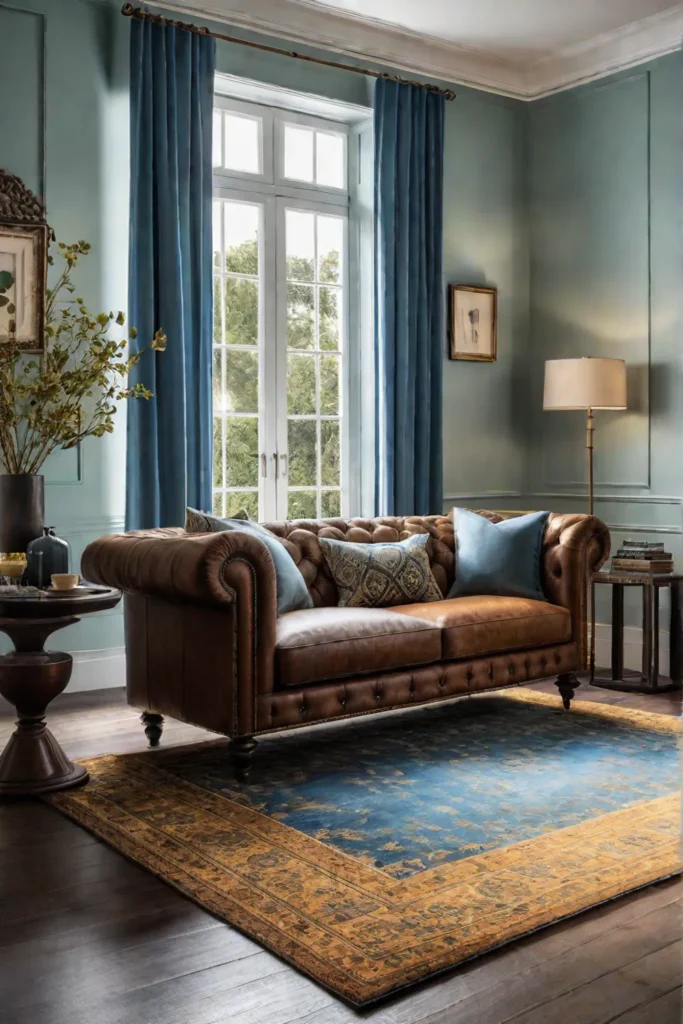
Moreover, colors have the power to shape our perception of space. Light hues can make a room feel more spacious and airy, while darker shades create a cozier, more intimate ambiance. This understanding allows us to strategically use color to visually expand or cozy up a small living room, defying its physical boundaries and tailoring the space to our needs.
Crafting a Harmonious Color Palette
Selecting the perfect color palette for your small living room is an art form. It begins with identifying the space’s undertones—the subtle hues that influence the overall color perception. Warm undertones, such as reds, oranges, and yellows, can make a space feel cozier and more intimate, while cool undertones, like blues, greens, and purples, create a calming and expansive atmosphere.
Once you’ve determined the undertones, you can begin to balance complementary and analogous colors. Complementary colors are opposites on the color wheel, like blue and orange, creating a striking contrast that can add depth and visual interest. Analogous colors, on the other hand, are adjacent hues that blend seamlessly, creating a cohesive and soothing palette.
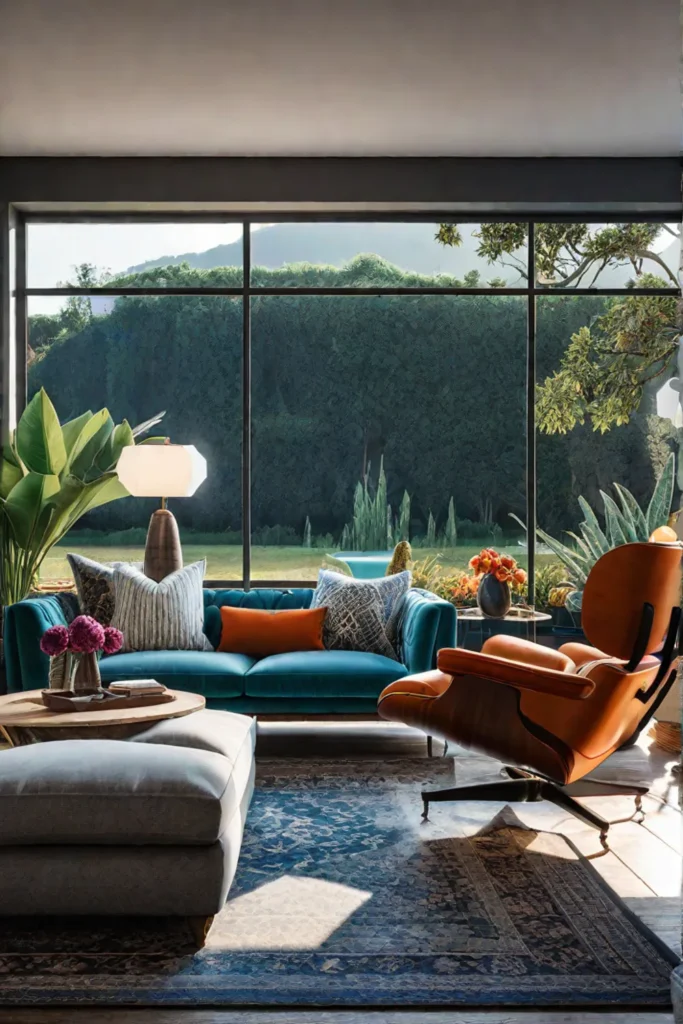
Incorporating accent colors is the final touch that breathes life into your design. These bold pops of color can create visual contrast, define focal points, and add depth to your space. Whether a vibrant throw pillow or a statement piece of artwork, accent colors can elevate your design and infuse it with personality.
Carving Out Cozy Nooks and Focal Points
In a small living room, every square inch counts. By strategically leveraging color, you can delineate distinct zones and create cozy, inviting nooks that cater to different moods and activities. A warm-toned accent wall, plush seating, and soft textiles can transform a corner into a comfortable reading retreat. At the same time, a cool-toned palette can define a conversation area, fostering a sense of openness and calm.
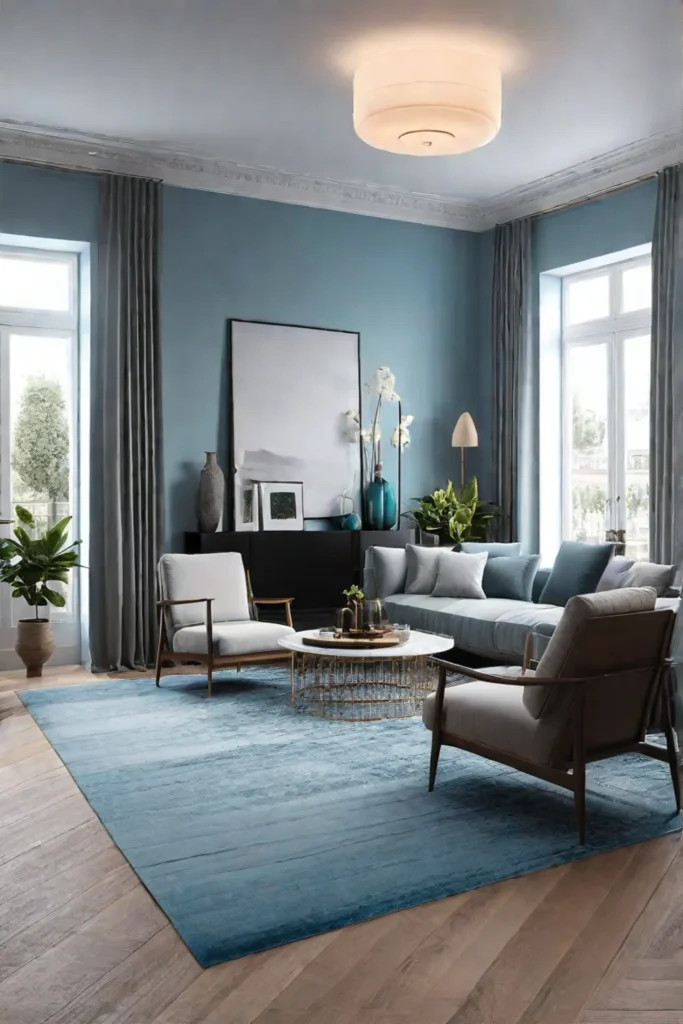
Accent colors also play a crucial role in establishing focal points that draw the eye and add visual interest. A bold hue used on a statement piece of furniture or a vibrant artwork can instantly command attention, creating a dynamic and engaging space that captivates the senses.
Maximizing Natural Light: A Bright and Airy Oasis
Natural light is a precious commodity in any living space, but it’s especially coveted in small rooms. By selecting the right colors, you can harness the power of natural illumination to create a brighter, more spacious atmosphere.
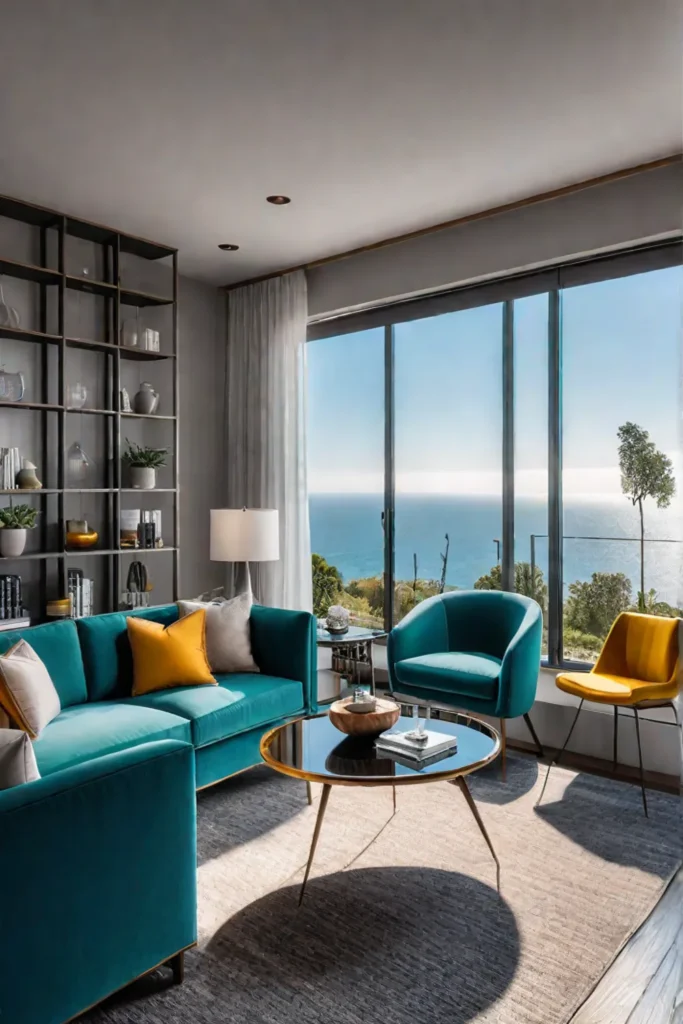
Light, reflective colors like whites and pastels can bounce light around the room, making it feel more open and airy. Conversely, darker hues tend to absorb light, creating a cozy and intimate ambiance. By strategically incorporating reflective surfaces like mirrors or glossy finishes, you can amplify the natural light and create the illusion of a more expansive space.
Striking a Balance: Warm and Cool Harmonies
Achieving the perfect balance between warm and cool tones is the key to creating a harmonious and visually appealing small living room design. Warm colors like reds, oranges, and yellows evoke coziness and intimacy, while cool hues like blues and greens create a calming and expansive atmosphere.

Combining complementary warm and cool colors allows you to create a dynamic and visually striking design that captivates the eye. For instance, a warm-toned accent wall paired with cool-toned accents can make a balanced and inviting space that seamlessly blends comfort and tranquility.
The Bold Allure of Accent Colors
Accent colors are the secret weapon in your design arsenal. They can add depth, interest, and personality to your small living room. By strategically incorporating these bold pops of color, you can create visual contrast and define distinct zones within your space.
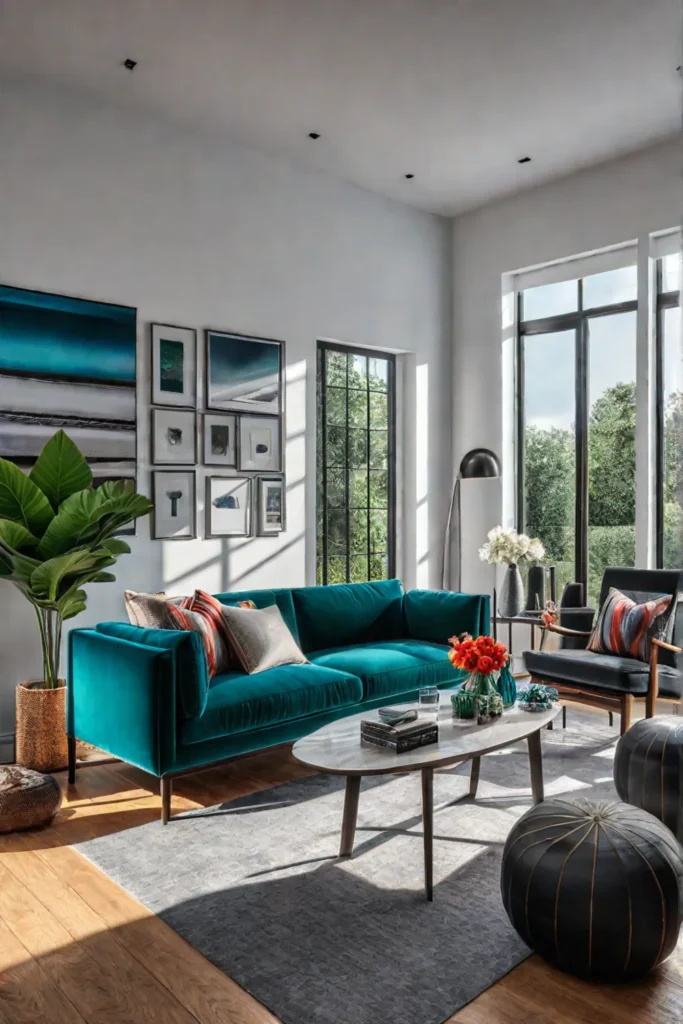
For example, a vibrant accent color used on a piece of artwork or a throw pillow can instantly draw the eye, creating a focal point that adds visual interest and breaks up the monotony of a monochromatic palette. Alternatively, a cool-toned accent color used on furniture can help differentiate a conversation area from a cozy reading nook, creating a sense of separation and definition within the compact space.
The Serenity of Monochromatic Schemes
For those seeking a calming and cohesive atmosphere, embracing a monochromatic color scheme can be the perfect solution. Using varying shades of a single hue, you can create a soothing and harmonious environment that exudes a sense of tranquility.

Incorporate textural elements like plush fabrics, woven rugs, and natural materials to add depth and visual interest to a monochromatic design. Subtle variations in tone and texture can create layers of complexity, preventing the space from feeling flat or one-dimensional.
Seamless Transitions: Connecting Color Schemes
Creating a cohesive flow between spaces is essential for maintaining a sense of harmony and visual continuity in a small home. When transitioning color schemes between your small living room and adjacent spaces, consider complementary color palettes and shared design elements carefully.
By using complementary hues, you can create a sense of separation while maintaining a cohesive aesthetic. For example, a warm-toned living room can be visually separated from a cool-toned bedroom through a complementary color palette, creating a sense of distinction while maintaining a harmonious flow.

Incorporating shared design elements like textiles, artwork, or accent pieces can also help tie the color schemes together, creating a seamless transition that enhances the sense of visual continuity throughout your home.
In conclusion, the strategic use of color psychology is a powerful tool for transforming a small living room into a cozy and inviting sanctuary. By understanding the emotional and psychological effects of different hues, you can select the perfect color palette to enhance your compact living area’s ambiance, mood, and perceived size. From leveraging light-enhancing colors to striking the right balance between warm and cool tones, the insights and strategies shared in this article will empower you to create small living rooms that are visually appealing and emotionally resonant, nurturing spaces that reflect your unique style and personality.
